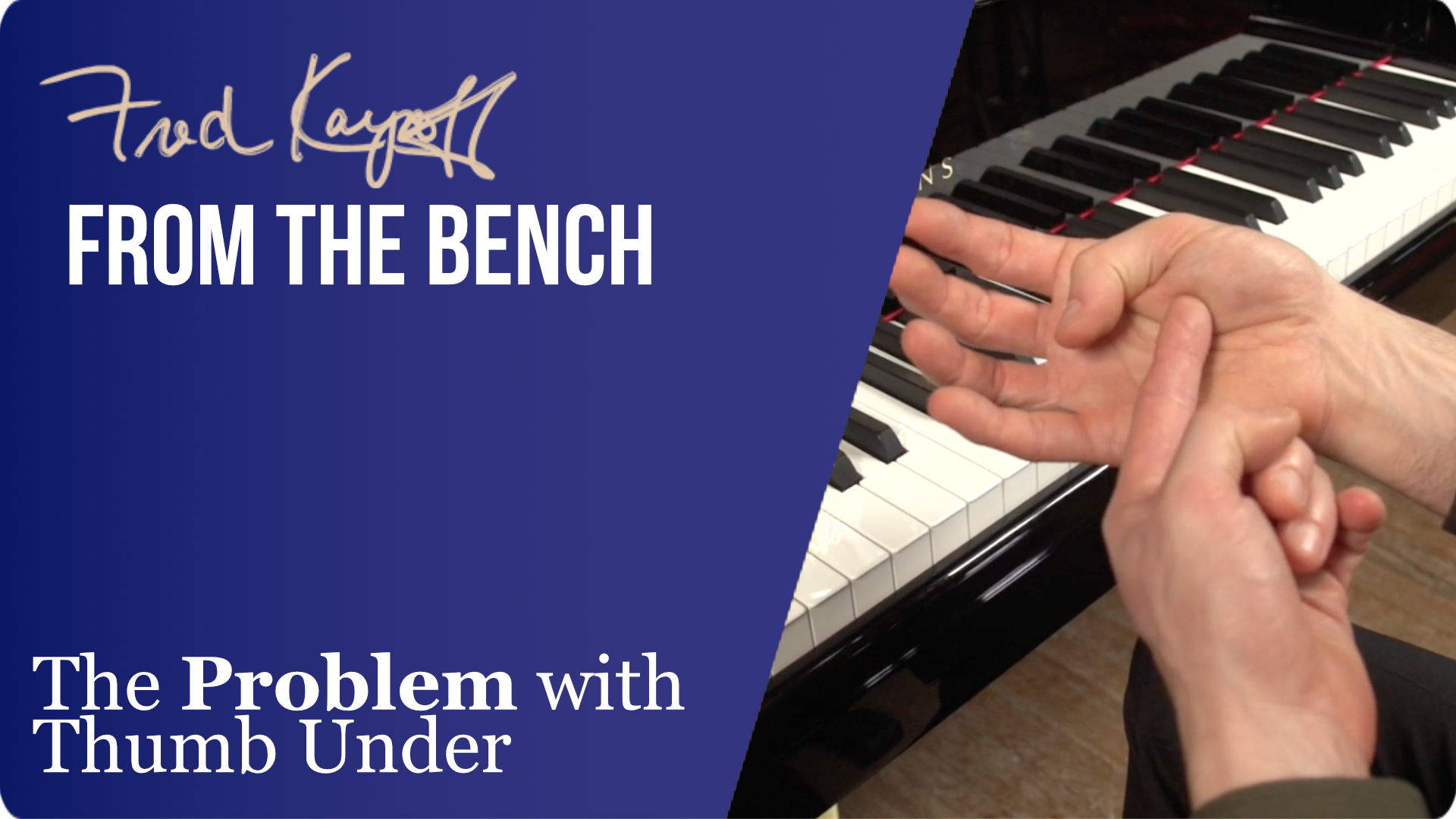
August 11, 2021
The Problem with Thumb-Under — and the Alternative
All posts

Most pianists today, including myself, were taught to play scales with the ‘thumb-under’ technique—that is, the practice of flexing the thumb under the palm immediately after the second finger plays its note.
This maxim is actually misguided. Holding tension by activating the adductor muscles at the base of the thumb is a grasping motion that inhibits free movement and coordination. Moreover, scales played in this manner typically sound uneven in tone and rhythm, with a sound that is not sufficiently warm.
In addition to limiting coordination in all movements, ‘thumb-under’ is a major contributor to injury. A pianist who has ‘mastered’ this technique (as seen in the following video) also holds excess tension at the wrist and moves the fingers with unnecessary effort—that is, by engaging opposing muscles simultaneously with continuously-held tension.
In Piano Notes, Charles Rosen describes ‘thumb-under’ as “a basic part of piano technique as it is conceived in conservatories the world over.” Rosen continues:
“…this fundamental practice is not as useful for some pianists as piano teachers think. A pupil of the late Dinu Lipatti, one of the most interesting pianists of [the 20th] century, told me that Lipatti once remarked: ‘You know, it has been at least ten years since I last crossed my thumb under the third finger.’ I was pleased to hear this, because I too have discovered that this basic position is in fact very uncomfortable.”
Well-coordinated scale playing—especially when any kind of speed is required–is easier to achieve with a motion that is closer to a ‘throw,’ the quick, lateral movement that is essential for brilliant arpeggios. This can be viewed in the following video:





I have always thought this was the way
I call it two smiles (as opposed to the reverse)—a rainbow
Shape. Also the wrist can come into action with the way you demonstrate. I tell my students we play with the wrists, not the fingers in a sense.
It is not clear to me from this how you get , fir example, in C, the F, without putting your thumb under.
Hi Gail,
Please see my comment below–thanks!
I also don’t understand how to play the F? I was wondering if maybe there is a 3rd video that’s missing?
Hi Lynn and Gail,
Thanks for your questions. The first video is a case study of someone who practiced extensively with “thumb-under” and developed stiff, ‘two-dimensional’ patterns of movement. The second video featured a segment of working with a student in B Major (Chopin’s favorite key to begin with, not only because it allows the most natural hand placement but also the smallest adjusting motions, because of its topography.) I think your questions have to do with playing the fourth note of the C Major scale, F.
While most of us consider C Major the ‘easiest’ scale to play, I actually think it’s the hardest to play well, with good biomechanics and effective three-dimensional movement. That’s why we deal first with these movements in B Major as the adjusting motions are slight and the passage of the thumb can be accomplished with minimal effort. In the second video, you can see me demonstrate the movement in B Major, passing the thumb under as part of an integrated motion that’s connected to the arm, with a flexible wrist. This is a fluid movement that stands in stark contrast to the stiff approach of the player in the first video.
When this movement becomes smooth and alignment adjustments occur continuously, it’s much easier to apply them to scales with more challenging topography (including passage of the thumb where there are whole steps, or in white-to-white key spots)–such as C Major. These are explored in greater detail in the advanced section of the Skills library in Entrada.